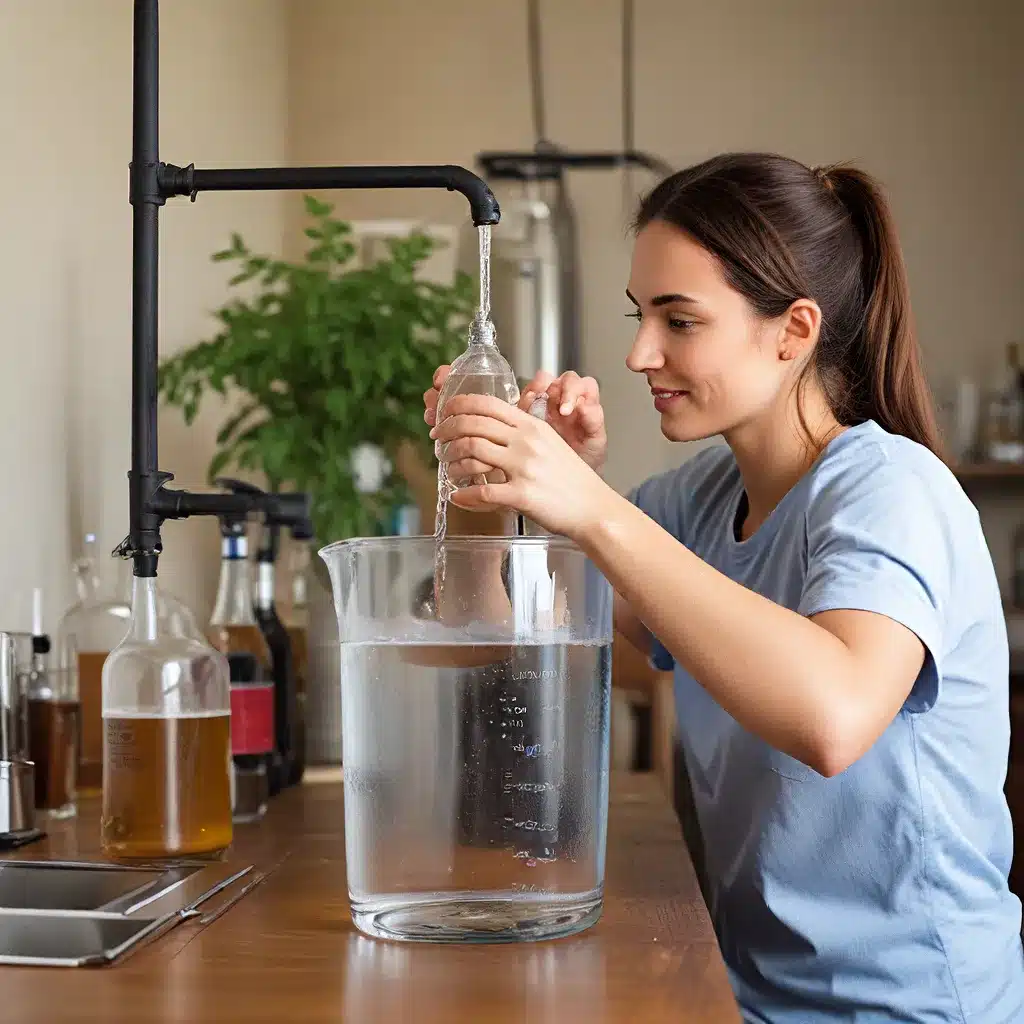
The Aqueous Abyss: Navigating the Mysteries of H2O
Ah, water – the ever-elusive, ever-present ingredient in our beloved beers. It makes up 90-95% of the stuff, yet it’s the one component we homebrewers often overlook or take for granted. I know I certainly did, at least in the beginning. It wasn’t until I started noticing subtle (and sometimes not-so-subtle) differences in my brews that I realized water chemistry might be the key to unlocking a whole new world of flavor.
Diving into the Details: Understanding Water Profiles
Let me tell you, diving into the world of water chemistry is like jumping into the deep end of a pool – there’s a lot going on below the surface that can seem overwhelming at first. But fear not, my fellow brewers, for I’m here to be your water wingman and guide you through the aqueous abyss.
As Scott Rao so eloquently put it, the single most important factor in how water will affect your beer’s flavor is alkalinity. This refers to the water’s resistance to becoming more acidic, and it’s measured in parts per million (ppm) of bicarbonate (HCO3-). Simply put, higher alkalinity makes your beer less acidic, while lower alkalinity makes it more tart and bright.
But that’s not all! There’s also hardness, which is the amount of dissolved calcium and magnesium in the water. Hardness can influence both flavor and the risk of scale buildup in your equipment. And let’s not forget about pH, which, while not as crucial as alkalinity, can still play a role in the final profile of your beer.
Navigating the Water Labyrinth: Finding the Right Balance
Now, you might be thinking, “Okay, this all sounds great, but how do I actually put this knowledge into practice?” Fear not, my thirsty friends, for I have a few tricks up my sleeve.
First and foremost, get a water analysis. Whether it’s your municipal water report or a detailed lab test, understanding the baseline chemistry of your H2O is the key to unlocking its full potential. As the experts at the Big Beers Festival rightly pointed out, “Test, don’t guess.” Knowing your water’s profile will help you decide the best course of action, whether that’s using a simple filter, blending, or even more advanced treatment methods.
Once you have your water profile, it’s time to get creative. Maybe your tap water is a little too alkaline for your liking – no problem! You can always blend it with some distilled water to lower the alkalinity. Or if your water is too soft, you can add mineral salts like calcium chloride or gypsum to boost the hardness and adjust the flavor.
Mastering the Water Dance: Balancing Flavor and Scale
But it’s not all about just tweaking the numbers. You also need to consider the impact of water chemistry on your equipment. As Drew Beechum from Beer and Brewing so aptly put it, “Water chemistry is finicky. The margins between great and awful can be measured in grams.”
Too much scale buildup in your kettle or lines can lead to all sorts of headaches, not to mention the potential impact on your beer’s flavor. That’s where the Langelier Saturation Index (LSI) comes into play. This handy tool can help you estimate the scaling potential of your water at various temperatures, allowing you to find the sweet spot between optimal flavor and minimal scale.
Putting it All Together: Crafting the Perfect Brew
Now, I know what you’re thinking: “This all sounds great, but how do I actually put it into practice?” Well, fear not, my thirsty friends, for I’ve got a few tips to get you started.
First and foremost, experiment! Try out different water profiles and see how they affect the flavor and aroma of your beers. Keep detailed notes, and don’t be afraid to get a little crazy. Who knows, you might just stumble upon the perfect water profile for your signature brew.
And remember, the The Up and Under Pub is always here to support your brewing adventures. Whether you’re looking for the perfect ingredients, equipment, or just a friendly ear, we’ve got your back. So pull up a stool, grab a pint, and let’s dive into the wonderful world of water chemistry together!

